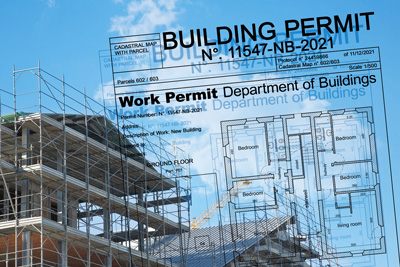Zeitgeist - News Highlights
The Economic Benefit of Apartments
A common misconception about apartment communities is that they are a burden on local infrastructure, schools and other municipal services. In reality, apartment communities and the 40 million Americans who live in them play a pivotal role in economic growth. According to research by Hoyt Advisory Services and Eigen10 Advisors, apartments contribute $3.9 trillion to the U.S. economy annually from consumer spending, employment, property operations and taxes.
The construction phase of an apartment community generally takes 24-36 months. During this period, local economies benefit from the purchase of building materials, the employment of architects, engineers and laborers and the spending from these workers at local businesses. On average, the construction of 100 apartments supports 179 jobs and generates $35.7 million in economic activity.
 After the apartments are built, jobs are created to lease, manage and maintain the community. Residents contribute to the local economy by spending on goods and services, including entertainment, food, retail and healthcare, which supports local businesses and drives job creation. Residents also require services like transportation, cleaning and childcare, which further stimulates growth. One of the largest drivers of property tax receipts for most municipalities is property taxes paid by apartment owners which in turn contributes to substantial property tax. And resident spending at local businesses generates sales tax revenue that funds infrastructure, schools and other public services.
After the apartments are built, jobs are created to lease, manage and maintain the community. Residents contribute to the local economy by spending on goods and services, including entertainment, food, retail and healthcare, which supports local businesses and drives job creation. Residents also require services like transportation, cleaning and childcare, which further stimulates growth. One of the largest drivers of property tax receipts for most municipalities is property taxes paid by apartment owners which in turn contributes to substantial property tax. And resident spending at local businesses generates sales tax revenue that funds infrastructure, schools and other public services.
The development and operation of apartment communities are integral to the economic vitality of America’s cities. Their impact extends beyond providing housing as they drive consumer spending, create jobs and generate tax revenue.
Construction in the Age of Extreme Wildfires
Following the recent Lahaina and Los Angeles wildfires – and as the U.S. faces more extreme and longer fire seasons – government officials continue to update building codes to require more fire-resistant materials for apartments and homes. And while there is no such thing as a fireproof structure, the debate is brewing over which construction materials should be required for rebuilding properties in fire hazard zones.
According to construction experts, constructing apartment buildings from non-combustible materials – like concrete and cement – is slower and more expensive, with costs estimated to be 20-40% higher for a mid-rise apartment property. Opponents point to the already high costs of apartment construction and the need for low-income housing, which may never be developed if more expensive materials are required. Advocates says the alternative – losing more buildings to future wildfires – is worse and if apartment properties are to be rebuilt in high-risk fire zones, the building codes must mandate fire-resistance materials.
For single-family homes, which are generally one or two-stories, there are more options for economically feasible fire-resistant materials given the smaller footprint, simplified engineering demands and lower total cost of construction. These include concrete block, engineered wood, steel, glass, stone, gypsum, brick and cast iron. Homes can also include design modifications like removing overhanging roofs and eaves that catch embers and utilizing mechanical venting that is designed to shut in the event of a fire.
As the planning for the rebuilding of Lahaina and Los Angeles begins, conversations surrounding building materials and building codes are becoming increasingly more important and may create a future roadmap for construction in fire-prone areas.
Share this Article
IN THIS ISSUE
PATHFINDER MULTIFAMILY OPPORTUNITY FUND IX, L.P.
CHARTING THE COURSE
Trumponomics 2.0: (aka “Move Fast and Break Things”)
FINDING YOUR PATH
The Chickens are Coming Home to Roost
GUEST FEATURE
Early Lessons from the L.A. Fires
ZEITGEIST
News Highlights
TRAILBLAZING
Casa Madrid, Chula Vista (San Diego), CA
NOTABLES AND QUOTABLES
Diligence
